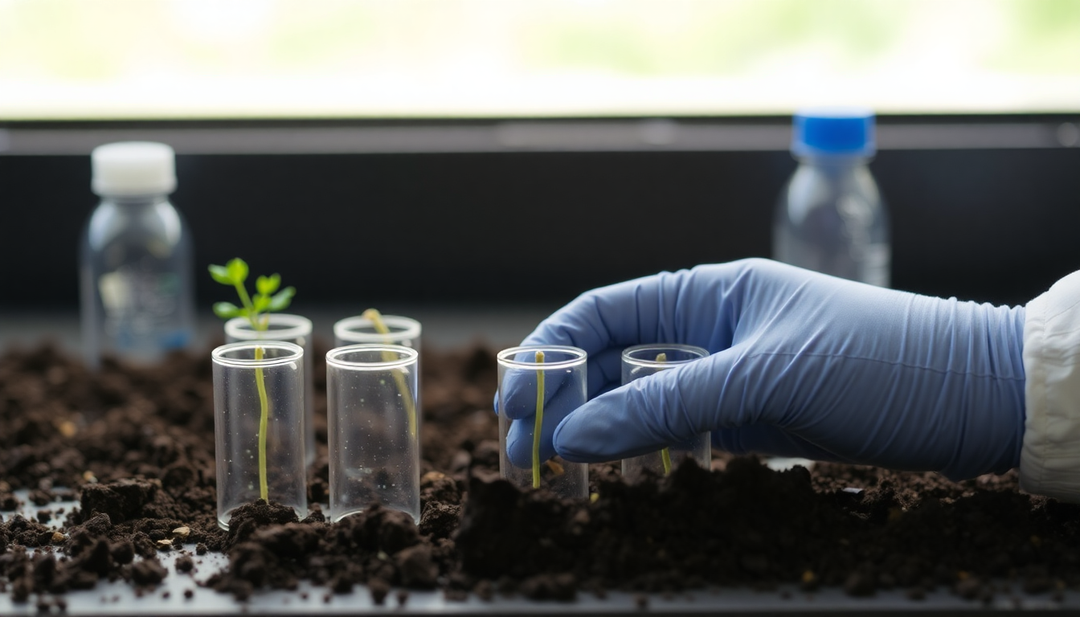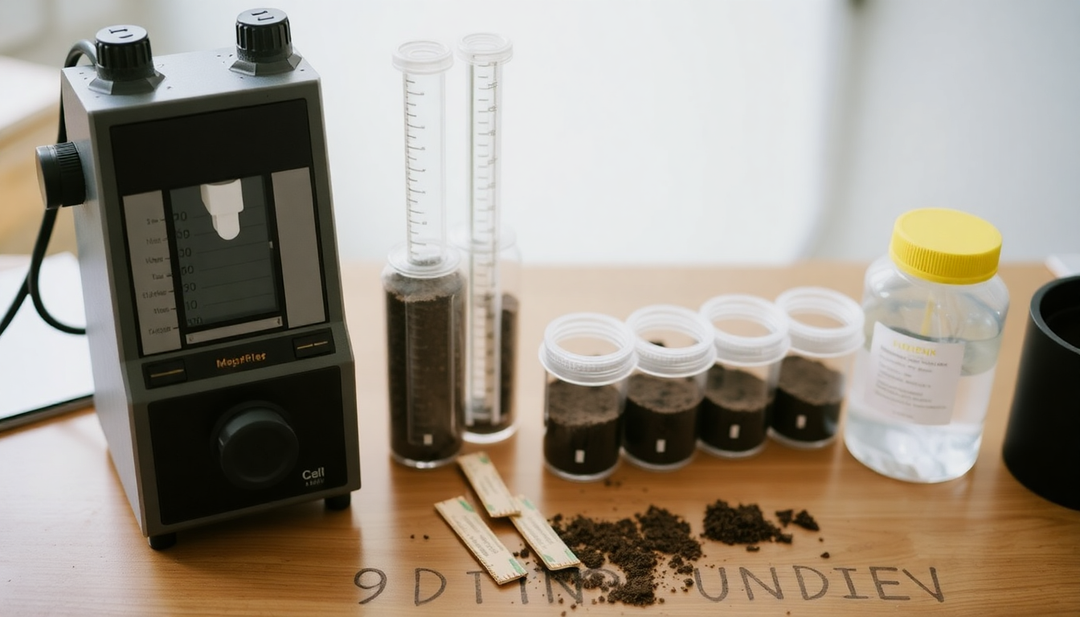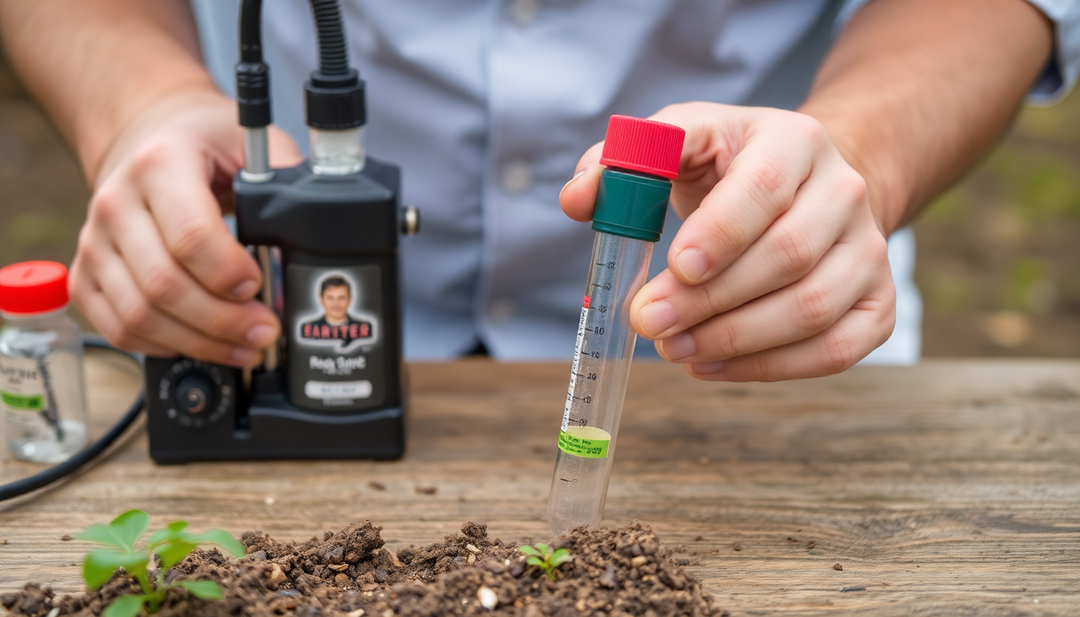Soil pollution by region in France: Understanding the causes and consequences for your garden

Introduction
The soils in our gardens play a crucial role in the health of our environment and our crops. However, they are regularly exposed to pollution that can compromise their quality. Many regions in France, in fact, face soil pollution due to industrialization, intensive agriculture, and other human-caused sources.
In this article, we take a look at the most affected regions. We then explore the causes of this pollution and explain its consequences for gardeners.
Overview of soil pollution in France by region
Soil pollution in France reflects the industrial, agricultural, and urban history of each region. This comprehensive review of France's regions highlights the main types of pollutants. It also examines the sectors of activity that influence local soil quality.
Hauts-de-France
Major pollutants: Heavy metals (lead, mercury, cadmium) and hydrocarbons.
- Origin: The region has long been an industrial center, particularly for metallurgy and coal mining. Today, the soils remain impregnated with heavy metals and hydrocarbons inherited from this period. In some agricultural sectors, pesticides also increase pollution pressure.
- Consequence: Soil quality is often limited for organic farming, due to the persistence of heavy metals, which also complicate natural soil regeneration.
Île-de-France
Major pollutants: Heavy metals (lead), microplastics, industrial residues and hydrocarbons.
- Origin: Due to high urbanization and heavy road traffic, soils in the Île-de-France region are exposed to persistent pollution from exhaust fumes, urban dust, microplastics, and industrial waste. Former industrial areas, now residential or commercial, continue to release contaminants into the soil.
- Consequence: These soils are particularly worrying for urban vegetable gardens, because they expose gardeners to potentially dangerous residues.
Grand Est
Major pollutants: Heavy metals, dioxins, pesticides.
- Origin: A former mining and steelmaking region, the Grand Est region is affected by the presence of heavy metals and dioxins linked to the chemical and metallurgical industries. Intensive agriculture adds to this the massive use of pesticides.
- Consequence: Soils are often unsuitable for permaculture practices and require special treatments to allow crops to be grown safely.
Normandy
Major pollutants: Nitrates, phosphates, heavy metals.
- Origin: Normandy is characterized by intensive agriculture, particularly with regard to livestock farming and the use of nitrogen and phosphate fertilizers. In addition, the soils located near old industrial facilities also contain heavy metal pollution.
- Consequence: Nitrates and phosphates, in fact, affect the quality of groundwater. In the long term, they also disrupt the chemical balance of the soil, limiting its natural fertility.
Brittany
Major pollutants: Pesticides, nitrates, antibiotic residues (in agricultural soils).
- Origin: This agricultural region is one of the largest consumers of pesticides and fertilizers in France. Intensive livestock farming also results in the presence of antibiotic residues in the soil.
- Consequence: The accumulation of chemicals, therefore, leads to a degradation of soil biodiversity. This affects both microbial life and the local ecosystem.
Pays de la Loire
Major pollutants: Nitrates, pesticides, industrial residues.
- Origin: The region is heavily agricultural and uses significant amounts of nitrates and pesticides. Some industrial areas also contribute to contamination with chemical residues.
- Consequence: This combined pollution, as a result, weakens soil biodiversity. In addition, it can also affect sensitive market garden crops, particularly those intended for local consumption.
New Aquitaine
Major pollutants: Pesticides, metal residues, hydrocarbons.
- Origin: With intensive wine and cereal agriculture, the soils of Nouvelle-Aquitaine are exposed to specific pesticides, as well as to heavy metal residues from agriculture and industrial activities (particularly in port areas).
- Consequence: The presence of chemical residues requires regenerative agricultural practices and increased vigilance for organic crops.
Centre-Val de Loire
Major pollutants: Pesticides, nitrates, residues from former industrial sites.
Origin: Grain farming is widespread in the region, with heavy use of pesticides and fertilizers. Former 20th-century industrial sites also contribute to local pollution.
Consequence: The high concentration of chemicals threatens soil balance and can limit the establishment of crops sensitive to residues.
Burgundy-Franche-Comté
Major pollutants: Dioxins, hydrocarbons, agricultural chemical residues.
- Origin: Formerly a region of heavy and chemical industry, Burgundy-Franche-Comté continues to bear the scars of this era. Viticulture is also a source of pesticides.
- Consequence: Soils may be unsuitable for certain vegetable crops and require corrective measures to preserve their quality.
Auvergne-Rhône-Alpes
Major pollutants: Hydrocarbons, chemical residues, heavy metals.
- Origin: Industrial and agricultural region, with chemical and processing facilities that influence soil composition. Areas near large cities like Lyon have high levels of heavy metals.
- Consequence: The diversity of pollutants requires gardeners to be more vigilant in adapting cultivation practices to local specificities.
Provence-Alpes-Côte d'Azur
Major pollutants: Hydrocarbons, heavy metals, pesticides.
- Origin: Due to the presence of refineries and the petrochemical industry, the soil contains hydrocarbons and metals. Agriculture also contributes through the use of pesticides.
- Consequence: Gardens in urban or industrial areas can have significant levels of pollution, requiring decontamination practices for vegetable crops.
Corsica
Major pollutants: Pesticides, metal residues.
- Origin: Island agriculture remains exposed to pesticides used in fruit and vegetable crops. Some industrial activities also leave metal residues.
- Consequence: Soil pollution can limit the diversity of local crops, requiring natural solutions to ensure healthy soil.
Occitania
Major pollutants: Pesticides, heavy metals, nitrates.
- Origin: A heavily agricultural region, Occitanie makes intensive use of pesticides and fertilizers. Former industrial sites also contribute to heavy metal pollution.
- Consequence: The soil requires monitoring to avoid the accumulation of chemical residues, particularly for sensitive crops and vegetable gardens.
This comprehensive regional overview shows how pollution reflects local history and economic activity. Moreover, region-by-region information allows gardeners to adopt practices adapted to their environment to preserve the health of their soil.
Consequences of soil pollution for gardens
Soil pollution has direct consequences on plant health, crop quality, and the balance of the local ecosystem. The main effects include:
- Plant Weakening: Pollutants interfere with plants' ability to absorb necessary nutrients, compromising their growth and disease resistance.
- Risk to human health: Vegetables and fruits grown in contaminated soil may contain traces of heavy metals, such as cadmium and lead, posing toxicity risks to consumers.
- Impact on biodiversity: Beneficial microorganisms and insects, essential for healthy soil, are sensitive to pollutants. Chemicals can reduce their population, affecting the natural balance of the garden.
For gardeners concerned with producing healthy crops, it is therefore essential to understand and monitor these impacts.
Solutions for detecting and remedying soil pollution
Fortunately, there are ways to analyze and improve the quality of your soil despite the risks of pollution. Here are some practical tools and products to help gardeners:
Soil Tests : Specific tests are available to determine the condition of your soil. On the Pouryère website, we offer analysis kits that detect pollution levels of heavy metals, hydrocarbons, PCBs, and BTEX, allowing gardeners like you to obtain a clear diagnosis of potential soil pollution.
Organic amendments : Amendments, such as compost, can help rebalance polluted soils by increasing organic matter and diluting certain toxins. In addition, they enrich the soil with essential nutrients for crops. Our agronomic analysis allows us to
Phytoremediation plants : Certain plants, such as sunflowers and cabbage, are capable of absorbing heavy metals and reducing soil pollution. These "phytoremediation" solutions are accessible and effective in contaminated gardens.
By choosing these solutions, gardeners can address pollution risks and preserve the health of their crops while respecting the balance of the environment.
Conclusion
Soil pollution is a major issue for gardeners and nature lovers. Understanding the types of pollution present in your region allows you to implement solutions that help clean the soil for planting. By conducting regular analyses and opting for natural amendments and depollutants, you protect your soil and ensure the safety of your crops.
We offer analyses tailored to your needs. Browse our selection on our website and discover how we can help you better understand your soil composition, for a healthy garden and risk-free crops.



